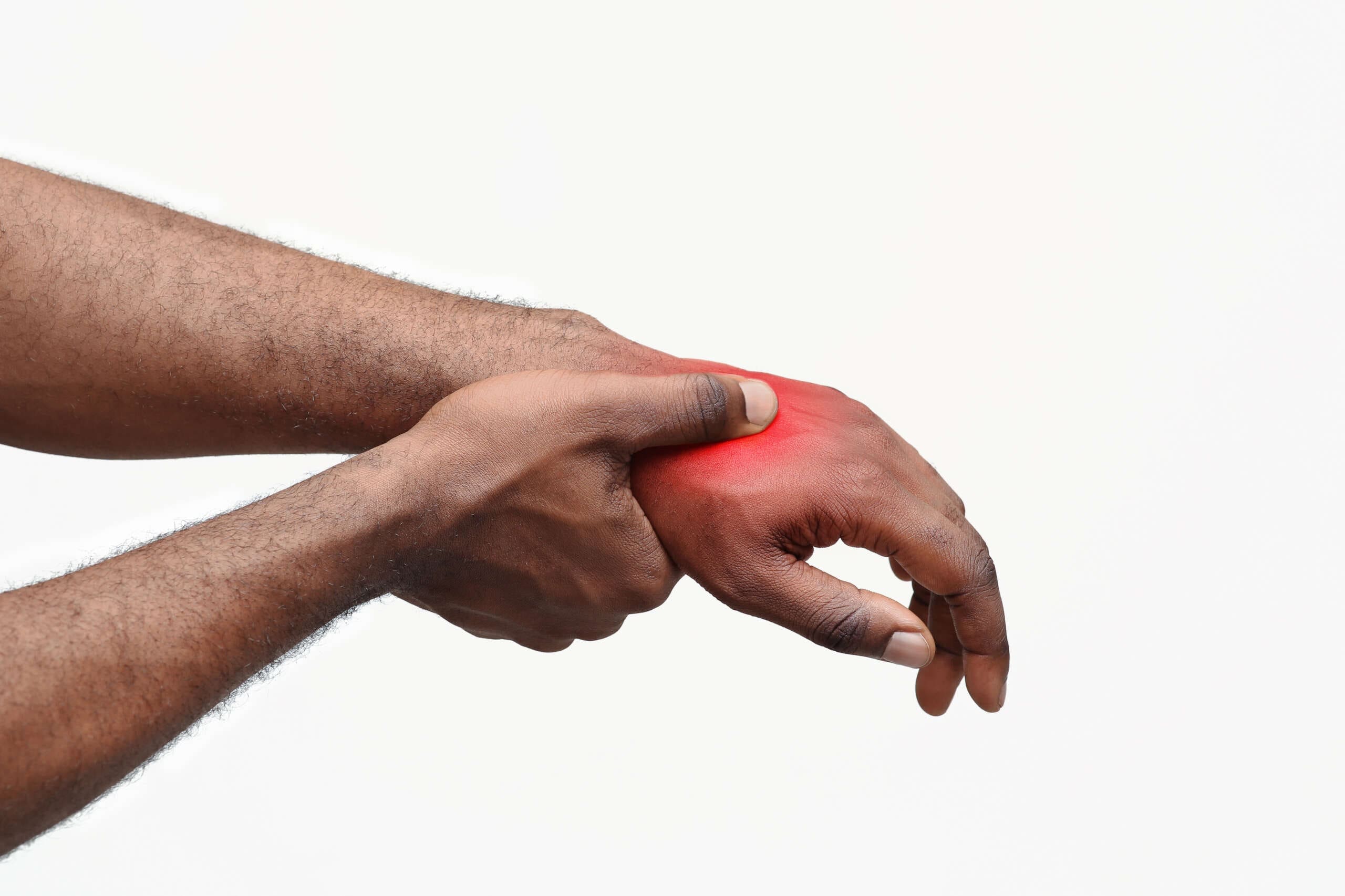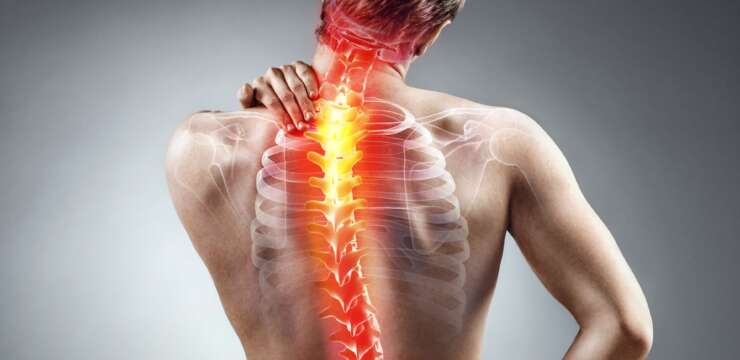
Uncover effective strategies in chiropractic care for diabetic neuropathy to enhance comfort and promote healthier lifestyles.
Table of Contents
Chiropractic Care for Diabetic Neuropathy Pain: A Comprehensive Guide to Relief and Recovery
Living with diabetes can feel like juggling flaming torches while riding a unicycle—one wrong move, and things get heated fast! One of the toughest challenges is diabetic neuropathy, where damaged nerves throw a party of pain, tingling, or numbness that nobody RSVP’d for. But don’t worry—there’s hope! Chiropractic care, combined with functional medicine and some targeted lifestyle adjustments, can help alleviate those cranky nerves. In this 5,000+ word guide, we’ll dive deep into why chiropractic care, led by experts like Dr. Alexander Jimenez, DC, APRN, FNP-BC in El Paso, Texas, is a game-changer for diabetic neuropathy pain. We’ll explore the types of neuropathy, their causes, the role of the musculoskeletal system, and how small changes can make a significant difference. Plus, we’ll highlight Dr. Jimenez’s expertise in personal injury cases, where his skills shine like a superhero’s cape. Let’s get started—it’s time to give those nerves a timeout!
What Is Diabetic Neuropathy? The Nerve-Wracking Truth
Diabetic neuropathy is like your body’s electrical system short-circuiting after years of high blood sugar. It’s a common complication of diabetes, affecting up to 50% of people with the condition (HealthCentral, n.d.). When blood sugar levels remain elevated, they damage nerve fibers, impairing their ability to send signals. Imagine your nerves as a cranky old phone line—sometimes the call gets through, but other times it’s static, silence, or a wrong number that feels like a zap of pain.
Types of Diabetic Neuropathy
Not all neuropathies are the same—they come in different flavors, each with its own way of making life tricky:
- Peripheral Neuropathy: The most common type, this condition primarily affects the feet, legs, hands, and arms. It’s like walking on a bed of pins or hot coals, with symptoms like numbness, tingling, or burning pain. It can make simple tasks like buttoning a shirt or walking to the mailbox feel like a mission impossible (HealthCentral, n.d.).
- Autonomic Neuropathy: This one messes with the nerves controlling your body’s autopilot systems—like digestion, heart rate, or sweating. It can lead to problems such as gastroparesis (slow stomach emptying), dizziness upon standing, or even trouble staying cool in the Texas heat (HealthCentral, n.d.).
- Proximal Neuropathy: Also called diabetic amyotrophy, this rare type targets the hips, thighs, or buttocks, causing pain or weakness. Climbing stairs or standing up might feel like tackling a steep hill with a backpack full of bricks. It’s more common in older adults with type 2 diabetes (HealthCentral, n.d.).
- Focal Neuropathy: This type of neuropathy targets specific nerves, often in the head, torso, or legs. It can cause sudden weakness or pain, like carpal tunnel syndrome or a drooping eyelid that makes you look like you’re winking at everyone. It’s unpredictable, striking like a ninja in the night (HealthCentral, n.d.).
Each type of neuropathy disrupts the body differently, but peripheral neuropathy is the star of the show when it comes to pain and mobility issues. It often teams up with musculoskeletal problems, creating a perfect storm that chiropractic care can help calm.
References:
- HealthCentral. (n.d.). Types of diabetic neuropathy. www.healthcentral.com/condition/diabetes/types-diabetic-neuropathy?legacy=ew
What Causes Diabetic Neuropathy? The Usual Suspects
Diabetic neuropathy doesn’t just show up uninvited—it’s the result of a gang of risk factors working together to fray your nerves. Here’s who’s crashing the party:
- High Blood Sugar: The ringleader, chronic high glucose levels damage nerve fibers over time. It’s like pouring syrup on your wiring—it gets sticky and stops working right (Pop-Busui et al., 2017).
- Long-Term Diabetes: The longer you’ve had diabetes, the more your nerves are at risk. It’s like they’re collecting battle scars from years of fighting high blood sugar (Pop-Busui et al., 2017).
- Poor Glucose Control: Inconsistent blood sugar management is like letting a toddler steer your car—crashes are inevitable. It accelerates nerve damage and exacerbates symptoms (Callaghan et al., 2012).
- Inflammation: Chronic inflammation is like adding fuel to the neuropathy fire, making pain and damage worse. It’s a key player in turning mild tingles into full-blown zaps (Pop-Busui et al., 2017).
- Obesity and Metabolic Syndrome: Extra weight and issues like high triglycerides or low HDL cholesterol stress your nerves, increasing neuropathy risk. It’s like your body’s carrying a heavy backpack that’s wearing out your nerves (Callaghan et al., 2012).
- Lifestyle Factors: Smoking, too much alcohol, or a couch-potato lifestyle are like the Three Stooges of nerve health—poking, prodding, and slapping your nerves into submission (Vinik et al., 2013).
- Musculoskeletal Stress: Misaligned spines or joints can compress nerves that are already weakened by diabetes, thereby increasing the pain volume. It’s like your body’s scaffolding is pinching the wiring (Trager et al., 2024).
These factors don’t just cause neuropathy—they also mess with your musculoskeletal system, creating a feedback loop of pain and dysfunction that chiropractic care can help interrupt.
References:
- Callaghan, B. C., Cheng, H. T., Stables, C. L., Smith, A. L., & Feldman, E. L. (2012). Diabetic neuropathy: Clinical manifestations and current treatments. The Lancet Neurology, 11(6), 521–534. pubmed.ncbi.nlm.nih.gov/32215272/
- Pop-Busui, R., Boulton, A. J., Feldman, E. L., Bril, V., Freeman, R., Malik, R. A., … & Ziegler, D. (2017). Diabetic neuropathy: A position statement by the American Diabetes Association. Diabetes Care, 40(1), 136–154. pubmed.ncbi.nlm.nih.gov/32999525/
- Trager, R. J., et al. (2024). Chiropractic and spinal manipulation: A review of research trends, evidence gaps, and guideline engagement recommendations. Journal of Clinical Medicine. www.mdpi.com/2077-0383/13/19/5668
- Vinik, A. I., Nevoret, M. L., Casellini, C., & Parson, H. (2013). Diabetic neuropathy. Endocrinology and Metabolism Clinics of North America, 42(4), 747–787. pubmed.ncbi.nlm.nih.gov/31197183/
The Musculoskeletal System: Your Body’s Scaffolding
Your musculoskeletal system—think bones, muscles, joints, and ligaments—is like the framework of a slightly creaky old house. When diabetes and neuropathy move in, they start rattling the structure, making everything groan louder. Here’s how the musculoskeletal system plays a role in neuropathy pain:
- Spinal Misalignments (Subluxations): When vertebrae are out of alignment, they can compress nerves, exacerbating neuropathy symptoms such as tingling or burning. It’s like your spine’s playing a prank on your nervous system, and it’s not funny (Jimenez, 2025a).
- Joint Dysfunction: Stiff or misaligned joints, particularly in the spine, hips, or feet, can compress nerves that are already damaged by diabetes. This turns a mild buzz into a full-on electric shock (Trager et al., 2024).
- Muscle Imbalances: Weak or tight muscles, often from neuropathy-related weakness or a sedentary lifestyle, tug on your spine and joints, increasing nerve irritation. It’s like your muscles are playing tug-of-war with your nerves as the rope (Bullock-Saxton et al., 1993).
- Inflammation Overload: Diabetes fuels inflammation, which stiffens joints and muscles, making them less cooperative and more likely to irritate nerves. It’s like your body’s stuck in a traffic jam, and the nerves are honking (Pop-Busui et al., 2017).
Chiropractic care steps in like a skilled carpenter, fixing the creaks and aligning the framework to reduce nerve stress and improve mobility. By addressing these musculoskeletal issues, chiropractors can help dial down neuropathy pain and get you moving again.
References:
- Bullock-Saxton, J. E., Janda, V., & Bullock, M. I. (1993). Reflex activation of gluteal muscles in walking: An approach to restoration of muscle function for patients with low-back pain. Spine, 18(6), 704–708.
- Jimenez, A. (2025a). Health & wellness bone health. Health Coach Clinic. healthcoach.clinic/health-wellness-bone-health/
- Pop-Busui, R., et al. (2017). Diabetic neuropathy: A position statement by the American Diabetes Association. Diabetes Care, 40(1), 136–154. pubmed.ncbi.nlm.nih.gov/32999525/
- Trager, R. J., et al. (2024). Chiropractic and spinal manipulation: A review of research trends, evidence gaps, and guideline engagement recommendations. Journal of Clinical Medicine. www.mdpi.com/2077-0383/13/19/5668
Why Chiropractic Care Works for Neuropathy Pain
Chiropractic care is like a soothing lullaby for frazzled nerves—it calms them down and helps them function properly again. Here’s the clinical reasoning behind why it’s effective for diabetic neuropathy pain:
1. Spinal Manipulative Therapy (SMT)
Chiropractors use SMT to realign vertebrae, reducing pressure on nerves. This improves nerve signaling and dials down pain from neuropathy-affected areas. A 2019 study found SMT effective for chronic low back pain, which shares similar nerve irritation pathways with peripheral neuropathy (Rubinstein et al., 2019). For neuropathy patients, this can mean less tingling or burning in the hands and feet (Trager et al., 2024).
2. Easing Nerve Compression
Misaligned joints or tight muscles can squeeze nerves already weakened by diabetes, amplifying pain. Chiropractic adjustments restore joint mobility and relax muscles, thereby reducing pressure. It’s like untangling a knotted phone charger—suddenly, everything works better (Jimenez, 2025a).
3. Boosting Blood Flow
Neuropathy often reduces blood flow to nerves, worsening damage. Chiropractic care enhances circulation by aligning the spine and reducing muscle tension, thereby delivering more oxygen and nutrients to the nerves. A 1994 study suggested manipulative treatment could enhance nerve function in diabetic polyneuropathy by improving blood flow and afferent stimulation (James & Stuart, 1994).
4. Taming Inflammation
Chronic inflammation fuels neuropathy pain. Chiropractic adjustments balance the nervous system, promoting anti-inflammatory responses that reduce burning and stinging sensations. It’s like turning down the heat on an overheated engine (Vinik et al., 2013).
5. Improving Mobility
Neuropathy makes movement painful, leading to a sedentary lifestyle that worsens musculoskeletal issues. Chiropractic care enhances joint function and muscle strength, making it easier to stay active, which supports nerve health and blood sugar control (Jimenez, 2025a).
Dr. Alexander Jimenez, with his dual expertise as a chiropractor and family nurse practitioner, uses advanced imaging (like MRI and X-rays) to pinpoint nerve compression and tailors adjustments to each patient’s needs at his El Paso Back Clinic (Jimenez, 2025b). His approach is like a custom-fit suit—designed to fit your body perfectly.
References:
- James, J. C., & Stuart, E. M. (1994). Diagnosis and manipulative treatment in diabetic polyneuropathy and its relation to intertarsal joint dysfunction. Journal of Manipulative and Physiological Therapeutics, 17(1), 29–34. pubmed.ncbi.nlm.nih.gov/38245327/
- Jimenez, A. (2025a). Health & wellness bone health. Health Coach Clinic. healthcoach.clinic/health-wellness-bone-health/
- Jimenez, A. (2025b). LinkedIn profile. www.linkedin.com/in/dralexjimenez/
- Rubinstein, S. M., et al. (2019). Benefits and harms of spinal manipulative therapy for the treatment of chronic low back pain: Systematic review and meta-analysis of randomised controlled trials. BMJ, 364, l689. www.bmj.com/content/364/bmj.l689
- Trager, R. J., et al. (2024). Chiropractic and spinal manipulation: A review of research trends, evidence gaps, and guideline engagement recommendations. Journal of Clinical Medicine. www.mdpi.com/2077-0383/13/19/5668
- Vinik, A. I., et al. (2013). Diabetic neuropathy. Endocrinology and Metabolism Clinics of North America, 42(4), 747–787. pubmed.ncbi.nlm.nih.gov/31197183/
Diabetic Back Pain- Video
Teaming Up: Chiropractic Care and Other Non-Surgical Treatments
Chiropractic care is the lead singer in the neuropathy relief band, but it shines brightest with a talented backup crew. Dr. Jimenez’s functional medicine approach at the El Paso Health Coach Clinic integrates these non-surgical treatments to tackle neuropathy pain from all angles:
1. Nutritional Therapy
Food is your body’s fuel, and the right choices can help repair nerves. Dr. Jimenez emphasizes anti-inflammatory diets rich in vegetables, lean proteins, and healthy fats. A 2015 pilot study demonstrated that a plant-based diet combined with support classes reduced neuropathy pain by improving blood sugar control and reducing inflammation (Bunner et al., 2015). Dr. Jimenez uses detailed lab work to spot nutrient deficiencies (like vitamin B12 or D) and prescribes all-natural nutraceuticals to support nerve health (Health Coach Clinic, n.d.).
2. Exercise and Physical Therapy
Moving your body is like giving your nerves a high-five. Aerobic exercises, such as walking or swimming, combined with strength training, improve blood flow and reduce inflammation. A 2019 review found that lifestyle changes, including regular exercise, can slow the progression of neuropathy (Head, 2019). Dr. Jimenez designs mobility programs to enhance joint function and alleviate pain without overexertion (Jimenez, 2025a).
3. Stress Management
Stress is like a megaphone for neuropathy pain—it makes everything louder. Yoga, meditation, and deep breathing lower stress hormones, calming the nervous system. A 2020 study showed yoga improved neuropathic symptoms by balancing the nervous system (Venkataram et al., 2020). Dr. Jimenez weaves stress-busting techniques into his treatment plans to keep pain in check (Jimenez, 2025a).
4. Detox Programs
Environmental toxins can stress nerves, making neuropathy worse. Dr. Jimenez’s detox programs reduce toxin exposure and support liver function, helping nerves recover. This aligns with functional medicine’s focus on identifying and addressing underlying causes (Health Coach Clinic, n.d.).
5. Acupuncture and Massage
These therapies are like the backup dancers that make the show pop. Acupuncture modulates pain signals, while massage relaxes muscles and boosts circulation. A 2019 study noted their effectiveness for neuropathy pain (Head, 2019). Dr. Jimenez often pairs these with chiropractic adjustments for maximum relief (Jimenez, 2025a).
This all-star lineup of treatments, led by chiropractic care, creates a comprehensive plan that tackles neuropathy pain and improves overall health.
References:
- Bunner, A. E., Wells, C. L., Gonzales, J., Agarwal, U., Bayat, E., & Barnard, N. D. (2015). A dietary intervention for chronic diabetic neuropathy pain: A randomized controlled pilot study. Nutrition & Diabetes, 5(5), e158. pubmed.ncbi.nlm.nih.gov/32036431/
- Head, K. A. (2019). Complementary and alternative medicine for painful peripheral neuropathy. Current Pain and Headache Reports, 23(9), 67. pubmed.ncbi.nlm.nih.gov/31197183/
- Health Coach Clinic. (n.d.). Functional medicine and wellness. healthcoach.clinic/
- Jimenez, A. (2025a). Health & wellness bone health. Health Coach Clinic. healthcoach.clinic/health-wellness-bone-health/
- Venkataram, T., et al. (2020). Effect of yoga on oxidative stress and antioxidant status in diabetic peripheral neuropathy. Journal of Bodywork and Movement Therapies, 24(4), 208–214. pubmed.ncbi.nlm.nih.gov/35428527/
Dr. Alexander Jimenez: El Paso’s Personal Injury Hero
In El Paso, Texas, Dr. Alexander Jimenez is like the Batman of back pain and neuropathy relief. With over 25 years as a Doctor of Chiropractic and a board-certified Family Nurse Practitioner, he’s a go-to expert for personal injury victims, especially those dealing with neuropathy pain from accidents or chronic conditions like diabetes. His practice at the El Paso Back Clinic (elpasobackclinic.com/) serves as a haven for individuals recovering from car accidents, workplace injuries, or slip-and-fall accidents (Jimenez, 2025b).
Why Dr. Jimenez Is a Cut Above
Dr. Jimenez’s dual licensure enables him to offer a unique blend of chiropractic and functional medicine expertise. Here’s how he helps personal injury victims:
- Advanced Imaging and Diagnostics: Using MRI, CT scans, and X-rays, Dr. Jimenez pinpoints nerve compression, herniated discs, or musculoskeletal injuries with precision. This ensures accurate diagnoses, critical for treatment and legal documentation (Jimenez, 2025a).
- Dual-Scope Procedures: He combines chiropractic adjustments with functional medicine to address structural issues (like subluxations) and systemic factors (like inflammation). This holistic approach speeds recovery and reduces pain (Health Coach Clinic, n.d.).
- Legal Liaison: Personal injury cases need detailed medical reports for insurance claims or lawsuits. Dr. Jimenez’s expertise in diagnostics and documentation makes him a trusted partner for attorneys, ensuring patients get the care and compensation they need (Jimenez, 2025b).
- Evidence-Based Approach: His treatments are supported by research, as evidenced by a 2024 review that demonstrates the cost-effectiveness of chiropractic care for spine-related pain, which often overlaps with neuropathy (Whedon et al., 2024).
From whiplash to neuropathy worsened by a fall, Dr. Jimenez’s comprehensive care helps patients get back on their feet—without the need for a Bat-Signal.
References:
- Health Coach Clinic. (n.d.). Functional medicine and wellness. healthcoach.clinic/
- Jimenez, A. (2025a). Health & wellness bone health. Health Coach Clinic. healthcoach.clinic/health-wellness-bone-health/
- Jimenez, A. (2025b). LinkedIn profile. www.linkedin.com/in/dralexjimenez/
- Whedon, J. M., et al. (2024). Cost of chiropractic versus medical management of adults with spine-related musculoskeletal pain: A systematic review. Chiropractic & Manual Therapies. chiromt.biomedcentral.com/articles/10.1186/s12998-024-00531-4
Small Changes, Big Impact: Lifestyle Tips for Neuropathy Relief
Big wins start with small steps, and Dr. Jimenez’s functional medicine approach offers practical tweaks to manage neuropathy pain. Here are some clinically inspired tips to keep your nerves smiling:
- Eat Like a Nerve Ninja: Load up on anti-inflammatory foods, such as leafy greens, salmon, and almonds. Skip the sugary snacks and trans fats—they’re like kryptonite for blood sugar control. A 2015 study showed plant-based diets reduced neuropathy pain (Bunner et al., 2015).
- Get Moving: Gentle exercises like walking, swimming, or yoga boost blood flow and tame inflammation. Start with 10–15 minutes daily and aim for 30 minutes, five days a week. Dr. Jimenez tailors mobility plans to keep you active without overdoing it (Jimenez, 2025a).
- Chill Out: Stress amplifies neuropathy pain like a bad DJ. Try mindfulness, deep breathing, or yoga to calm your nervous system. A 2020 study found yoga improved neuropathic symptoms (Venkataram et al., 2020).
- Sleep Like a Pro: Poor sleep makes pain and inflammation worse. Aim for 7–9 hours of quality sleep with a consistent schedule and no screens before bed. Dr. Jimenez’s patients report better pain control with good sleep (Health Coach Clinic, n.d.).
- Supplement Wisely: Under Dr. Jimenez’s guidance, consider supplements like alpha-lipoic acid, vitamin B12, or magnesium to support nerve health. A 2019 review highlighted the benefits of this approach for neuropathy (Head, 2019).
These small tweaks, when paired with chiropractic care, can help turn the tide against neuropathy pain and boost your overall quality of life.
References:
- Bunner, A. E., et al. (2015). A dietary intervention for chronic diabetic neuropathy pain: A randomized controlled pilot study. Nutrition & Diabetes, 5(5), e158. pubmed.ncbi.nlm.nih.gov/32036431/
- Head, K. A. (2019). Complementary and alternative medicine for painful peripheral neuropathy. Current Pain and Headache Reports, 23(9), 67. pubmed.ncbi.nlm.nih.gov/31197183/
- Health Coach Clinic. (n.d.). Functional medicine and wellness. healthcoach.clinic/
- Jimenez, A. (2025a). Health & wellness bone health. Health Coach Clinic. healthcoach.clinic/health-wellness-bone-health/
- Venkataram, T., et al. (2020). Effect of yoga on oxidative stress and antioxidant status in diabetic peripheral neuropathy. Journal of Bodywork and Movement Therapies, 24(4), 208–214. pubmed.ncbi.nlm.nih.gov/35428527/
Tackling Overlapping Risk Profiles
Diabetes is a systemic troublemaker, stressing your nerves, musculoskeletal system, and heart. Chiropractic care and functional medicine tackle these overlapping risks to reduce neuropathy pain and boost overall health:
- Blood Sugar Control: Maintaining stable glucose levels helps alleviate nerve and joint stress. Dr. Jimenez’s nutritional plans help manage diabetes, reducing the impact of neuropathy (Health Coach Clinic, n.d.).
- Weight Management: Obesity worsens neuropathy and joint pain. Chiropractic care promotes mobility, while dietary guidance supports weight loss, easing musculoskeletal strain (Callaghan et al., 2012).
- Heart Health: Neuropathy and heart disease share common risk factors, including inflammation. Chiropractic adjustments and lifestyle changes improve blood flow, supporting nerves and the heart (Jimenez, 2025a).
- Injury Prevention: Diabetes can weaken bones and joints, increasing the risk of injury. Chiropractic care strengthens the musculoskeletal system, thereby reducing the risk of falls and fractures (Robling & Turner, 2009).
This comprehensive approach not only relieves neuropathy pain but also builds a foundation for long-term wellness.
References:
- Callaghan, B. C., et al. (2012). Diabetic neuropathy: Clinical manifestations and current treatments. The Lancet Neurology, 11(6), 521–534. pubmed.ncbi.nlm.nih.gov/32215272/
- Health Coach Clinic. (n.d.). Functional medicine and wellness. healthcoach.clinic/
- Jimenez, A. (2025a). Health & wellness bone health. Health Coach Clinic. healthcoach.clinic/health-wellness-bone-health/
- Robling, A. G., & Turner, C. H. (2009). Mechanical signaling for bone remodeling. Exercise and Sport Sciences Reviews, 37(2), 76–83.
Conclusion: A Serious Path to Relief
Diabetic neuropathy can feel like an uphill battle, but chiropractic care, led by experts like Dr. Alexander Jimenez in El Paso, Texas, offers a powerful, non-invasive solution. By combining spinal adjustments with functional medicine, nutritional therapy, and lifestyle modifications, Dr. Jimenez addresses the underlying causes of neuropathy pain, enabling patients to regain mobility and comfort. His expertise in personal injury cases, backed by advanced imaging and dual-scope procedures, makes him a trusted ally for those navigating recovery and the legal documentation process. This holistic approach empowers patients to take charge of their health and find relief from the grip of neuropathy.
Disclaimer: This blog post is for informational purposes only and is not a substitute for professional medical advice. Always consult a qualified healthcare provider, such as Dr. Alexander Jimenez, before starting any treatment plan. Individual results may vary, and professional guidance is essential for safe and effective care.
Disclaimers
Professional Scope of Practice *
The information herein on "Chiropractic Care for Diabetic Neuropathy Patients" is not intended to replace a one-on-one relationship with a qualified health care professional or licensed physician and is not medical advice. We encourage you to make healthcare decisions based on your research and partnership with a qualified healthcare professional.
Blog Information & Scope Discussions
Welcome to El Paso's wellness blog, where Dr. Alex Jimenez, DC, FNP-C, a board-certified Family Practice Nurse Practitioner (FNP-C) and Chiropractor (DC), presents insights on how our team is dedicated to holistic healing and personalized care. Our practice aligns with evidence-based treatment protocols inspired by integrative medicine principles, similar to those found on dralexjimenez.com, focusing on restoring health naturally for patients of all ages.
Our areas of chiropractic practice include Wellness & Nutrition, Chronic Pain, Personal Injury, Auto Accident Care, Work Injuries, Back Injury, Low Back Pain, Neck Pain, Migraine Headaches, Sports Injuries, Severe Sciatica, Scoliosis, Complex Herniated Discs, Fibromyalgia, Chronic Pain, Complex Injuries, Stress Management, Functional Medicine Treatments, and in-scope care protocols.
Our information scope is limited to chiropractic, musculoskeletal, physical medicine, wellness, contributing etiological viscerosomatic disturbances within clinical presentations, associated somato-visceral reflex clinical dynamics, subluxation complexes, sensitive health issues, and functional medicine articles, topics, and discussions.
We provide and present clinical collaboration with specialists from various disciplines. Each specialist is governed by their professional scope of practice and their jurisdiction of licensure. We use functional health & wellness protocols to treat and support care for the injuries or disorders of the musculoskeletal system.
Our videos, posts, topics, subjects, and insights cover clinical matters, issues, and topics that relate to and directly or indirectly support our clinical scope of practice.*
Our office has reasonably attempted to provide supportive citations and has identified the relevant research studies or studies supporting our posts. We provide copies of supporting research studies available to regulatory boards and the public upon request.
We understand that we cover matters that require an additional explanation of how they may assist in a particular care plan or treatment protocol; therefore, to discuss the subject matter above further, please feel free to ask Dr. Alex Jimenez, DC, APRN, FNP-BC, or contact us at 915-850-0900.
We are here to help you and your family.
Blessings
Dr. Alex Jimenez DC, MSACP, APRN, FNP-BC*, CCST, IFMCP, CFMP, ATN
email: coach@elpasofunctionalmedicine.com
Licensed as a Doctor of Chiropractic (DC) in Texas & New Mexico*
Texas DC License # TX5807
New Mexico DC License # NM-DC2182
Licensed as a Registered Nurse (RN*) in Texas & Multistate
Texas RN License # 1191402
ANCC FNP-BC: Board Certified Nurse Practitioner*
Compact Status: Multi-State License: Authorized to Practice in 40 States*
Graduate with Honors: ICHS: MSN-FNP (Family Nurse Practitioner Program)
Degree Granted. Master's in Family Practice MSN Diploma (Cum Laude)
Dr. Alex Jimenez, DC, APRN, FNP-BC*, CFMP, IFMCP, ATN, CCST
My Digital Business Card






